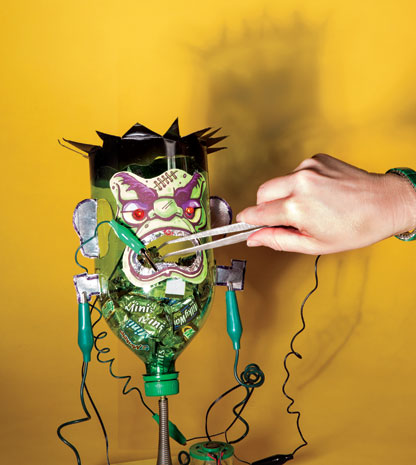
Here’s a classic toy reimagined for you to make just in time for Halloween candy-giving and party fun. It’s the Mad Monster Candy Snatch game, which combines the nerve-wracking dexterity of the old classic Operation game (BZZZZZT!) with a fun monster head–shaped candy dispenser. Make those little goblins earn their treats with this tricky game!
It’s simple to make and you can customize the play to be as easy or difficult as you like. You can even personalize it with your own voice, choice sayings, and sound effects.
The see-through green monster head is filled with fun-sized candies. Do you dare to snatch a snack? Use the forceps to carefully reach inside its mouth. If you can maneuver out a candy, you’ve won a treat! But be careful — if you touch the side you lose! The monster wakes up with crackling, shocking sound effects and announces “YOU MAKE MONSTER MAD! YOU LOSE!” as his angry eyes flash red. No treat for you!



















